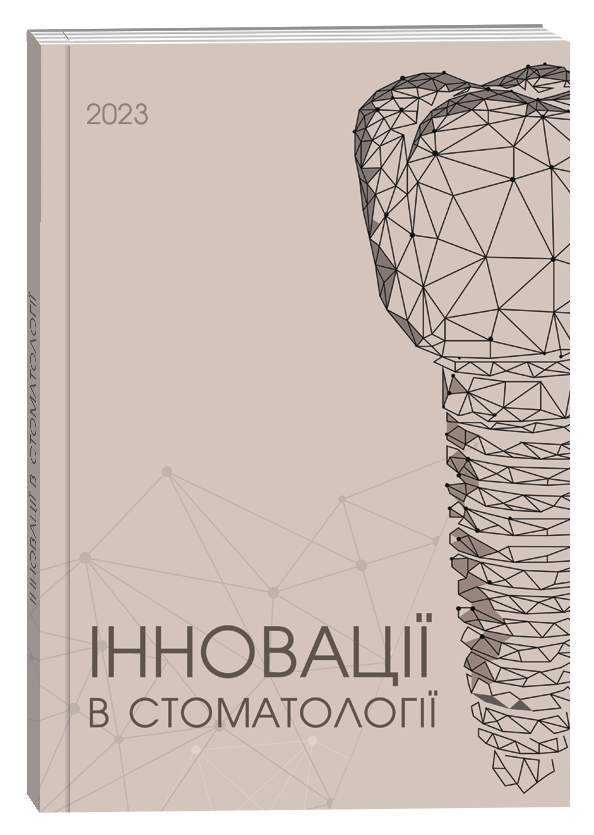USE OF THE SPLINT THERAPY FOR COMPLEX EXTRACTION OF THIRD MOLARS
DOI:
https://doi.org/10.35220/2523-420X/2025.1.17Keywords:
patients, complex extraction of third molars, dentition length, chronic traumatic arthritis of the temporomandibular joint, orthodontic pathology, splint therapyAbstract
A clinical observation of patients who underwent splint therapy was conducted: the use of a standard blue T4A orthodontic splint 1 month before surgical intervention and during the post-surgery period for 2 months.Materials and methods. Surgical interventions for the complex extraction of third molars were performed in patients with orthodontic pathology and patients with chronic traumatic arthritis of the temporomandibular joint. All extracted teeth were displaced, impacted and caused discomfort to patients during the functional work of the dentofacial apparatus. 26 patients aged from 18 to 35 underwent complex extraction of third molars.The patients were divided into four groups: 1st group consisted of 10 men, 2nd group consisted of 10 women who underwent splint therapy before and after surgery; 3rd and 4th groups consisted of 3 men and 3 women not using splint therapy. All patients were under regular medical check-up for a year. At the same time, a comparative analysis of panoramic radiographs and diagnostic models of the jaws was performed in the studied groups before and 1 hour after the surgical intervention. Prior to surgical intervention 1 month before and after the complex extraction of third molars for 2 months, it was recommended to the patients to use a blue T4A standard orthodontic splint at night. Results. The research findings revealed significant differences in the dentition lengths in the patients under study before and after the complex extraction of third molars, as well as an improvement in their general condition on the part of the temporomandibular joint work. Changes in the occlusal relationships of the teeth of the upper and lower jaws during complex extraction of third molars contribute to the physiological rearrangement of the dental bite and functional changes in the temporomandibular joint work being very importantin the treatment of patients with chronic traumatic arthritis of the temporomandibular joint and orthodontic pathology in the form of frontal tooth crowding. Conclusions. The use of splint therapy before and after surgical intervention contributed to more persistent and pronounced functional changes in the work of the dentofacial apparatus, both during visual examination and during digital analysis.
References
Гутор Н. С. Практичні навички з хірургічної стоматології : посібник. Укрмедкнига, 2024. 240 с.
Kleinrock M. Functional disorders of the motor part of the chewing apparatus. Lviv: GalDent. 2015. 256 p.
Клінічна пародонтологія та імплантологія за Ньюманом і Каррансою: 14-е видання: в 2-х томах / Майкл Г. Ньюман та ін. ВСВ «Медицина», 2024. 1280 с.
Semenov K. A., Drohomyretska M. S., Denha O. V., Horokhivskyi V. N. Normalization of occlusional relationships within dentitions as the main stage of treatment of disorders of temporomandibular joint. Modern Science. 2016. № 6. С. 144–150.
Тимофєєв O. O. Щелепно-лицева хірургія: підручник. Київ : Медицина, 2017. 752 с.
Тимофєєв О. О. Щелепно–лицева хірургія: підручник : 3-е вид., перероблено та доповнено. Київ : ВСВ «Медицина», 2022. 792 с.








